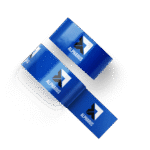Home » Plastic vs Paper Packaging Tape: Which to use?
Plastic vs Paper Packaging Tape: Which to use?
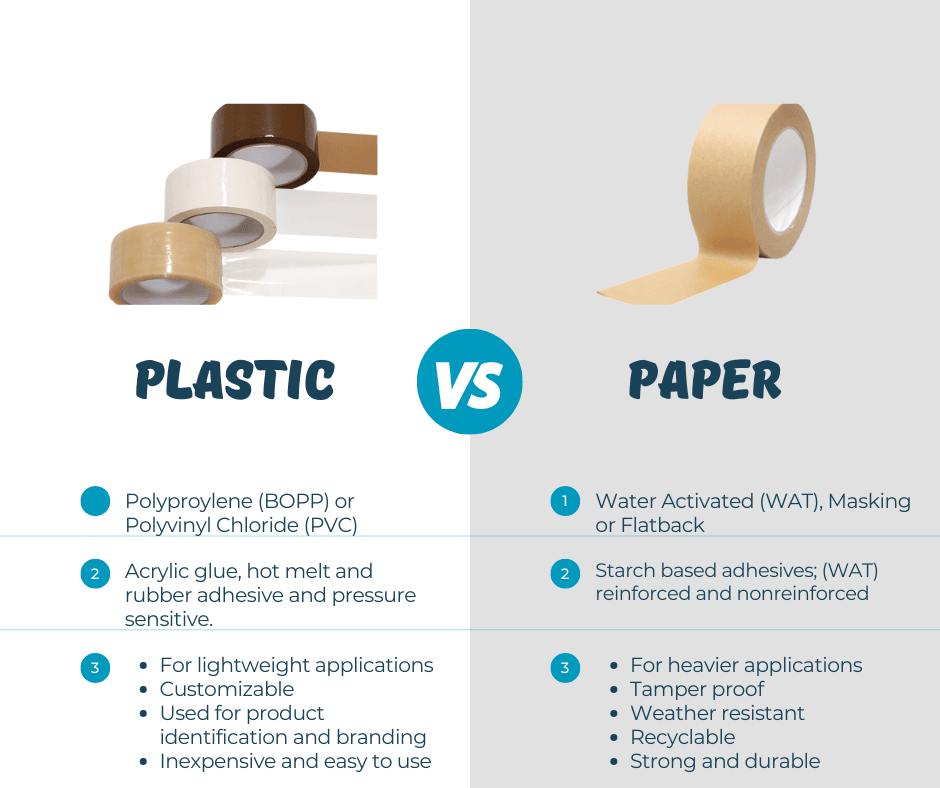
Plastic and paper packaging tapes both serve the same core purpose — sealing, wrapping, and bundling packages — but their performance differs depending on application. Each has unique properties that affect strength, cost, recyclability, and security. Choosing the right tape ensures your packaging remains efficient, secure, and cost-effective.
Plastic Packaging Tape
Plastic tape, often called clear tape, is a pressure-sensitive tape designed for lightweight and general-purpose packaging. It is popular for being durable, dust-resistant, inexpensive, and easy to apply with hand or machine dispensers.
Common Types
Polypropylene (BOPP): Thin, cost-effective, customizable; best for light to medium-duty use.
Polyvinyl Chloride (PVC): Thicker, quieter, and more durable; better for heavier packages but more expensive.
Adhesives Used
Acrylic: Performs in hot and cold environments; good for long-term storage.
Hot Melt: Aggressive initial tack; best for shipping and storage but less reliable under temperature extremes.
Rubber-Based: Premium adhesive with strong bonds in all conditions; higher cost.
Advantages
Readily available and inexpensive
Easy to apply, even on the go
Highly customizable for branding
Disadvantages
Less secure than paper tape
Often requires multiple layers for strength
Lower recyclability compared to paper tape
Best Applications
Plastic tape is best for lightweight, everyday shipping and situations where cost efficiency and branding flexibility matter.
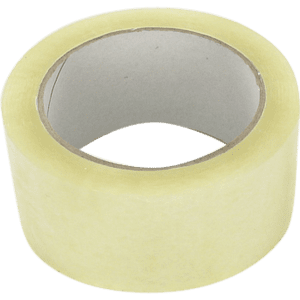
BOPP Tape
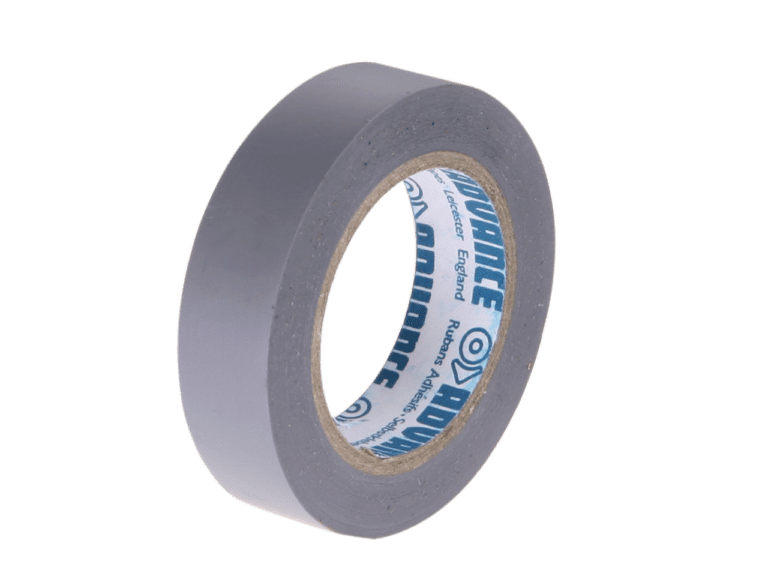
PVC Tape
Paper Packaging Tape
Paper tape, often called Kraft tape, uses a starch-based adhesive and is valued for its strength, tamper resistance, and sustainability. It is ideal for heavy-duty or high-security packaging.
Common Types
Water Activated Tape (WAT): Creates a permanent bond when moistened. Available in reinforced (fiberglass strands) or non-reinforced grades.
Flatback Tape: Pressure-sensitive version suitable for heavy packaging and weather-resistant sealing. Available in multiple colors.
Advantages
Strong and tamper-proof
Requires less tape per seal
Recyclable and eco-friendly
Performs well in extreme environments
Disadvantages
Requires a dispenser (less portable)
Slower to apply in fast-paced operations
Best Applications
Paper tape is best for heavier, high-value shipments where strength, security, and sustainability are priorities. Common in food, pharmaceuticals, healthcare, electronics, and e-commerce.
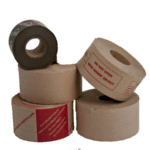
Water Activated Tape
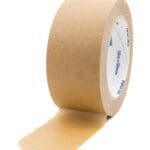
Flatback Tape
Plastic vs. Paper: Key Differences
| Feature | Plastic Tape | Paper Tape |
|---|---|---|
| Material | Polypropylene or PVC | Kraft paper with starch adhesive |
| Application | Lightweight, general use | Heavy-duty, tamper-proof |
| Ease of Use | Portable, quick to apply | Requires dispenser |
| Sustainability | Less recyclable | Fully recyclable |
| Security | Lower | Higher (tamper evident) |
| Cost | Lower upfront cost | Higher upfront, less used per seal |
Work With Brown Packaging
At Brown Packaging, we help businesses select the right tape for their specific shipping and operational needs. Whether you need cost-effective plastic tape for high-volume shipments or secure paper tape for heavy-duty applications, our team can guide you toward the best choice. Contact Brown Packaging today to get started.
References
Pressure Sensitive Tape Council (PSTC). (2023). Packaging Tape Standards and Applications. Retrieved from https://www.pstc.org
Flexible Packaging Association. (2023). Adhesives and Packaging Performance. Retrieved from https://www.flexpack.org
Robertson, G. L. (2016). Food Packaging: Principles and Practice (3rd ed.). CRC Press.
In the retail environment, the placement of Point of Purchase (POP) displays is just as critical as their design and content. Strategic positioning can significantly
Choosing the right foam density isn’t about “soft” versus “hard” — it’s about controlling shock transmission and matching the foam’s cushioning curve to the product’s
Moisture resistance and dimensional stability are critical performance factors for custom inserts, especially when products are shipped or stored in variable climates. Both foam and
Sustainability in pet food packaging is not just about recyclability—it’s about reducing environmental impact across the entire lifecycle. For products with high barrier needs like
Retailers place strict requirements on packaging to ensure products move efficiently through distribution centers, arrive safely, and look consistent on shelves. Non-compliance can lead to
RSC boxes dominate shipping because they combine strength with efficiency. But beyond protection, their dimensions and stacking performance directly influence freight cost, pallet utilization, and
Home » Plastic vs Paper Packaging Tape: Which to use?

When it comes to retail marketing, Point of Purchase (POP) displays are essential for capturing customer attention and promoting your products effectively. The size and

When most buyers think of packaging design, they picture logos, colors, and graphics—but what’s often overlooked is structural design: the way your box is shaped,
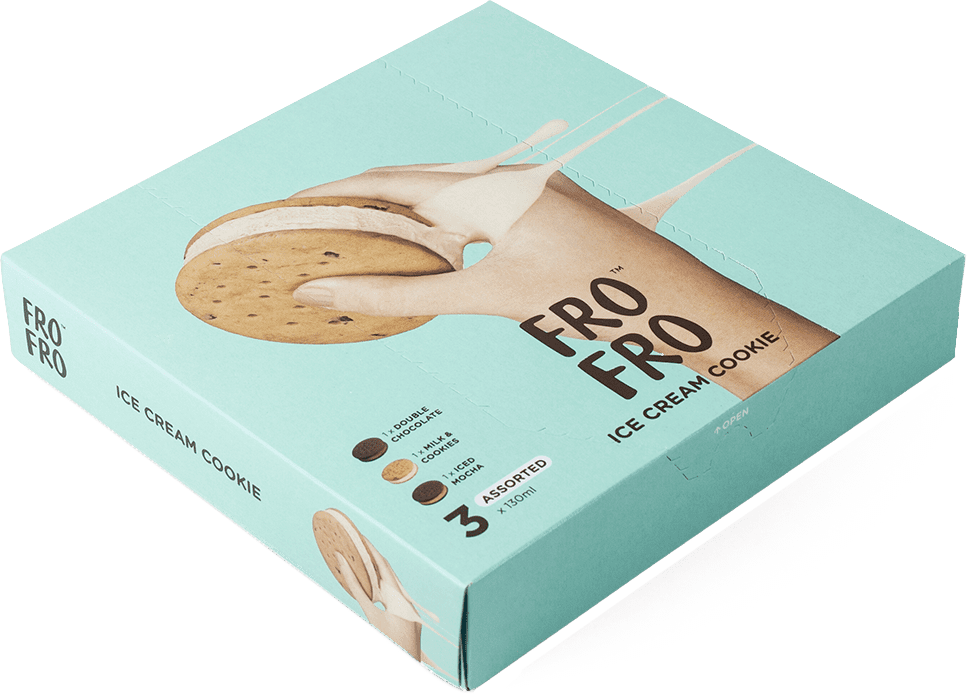
Score cracking—visible fiber breakage along a fold—can ruin a carton’s appearance, weaken its structure, and cause failures on automated lines. Understanding the causes and engineering


